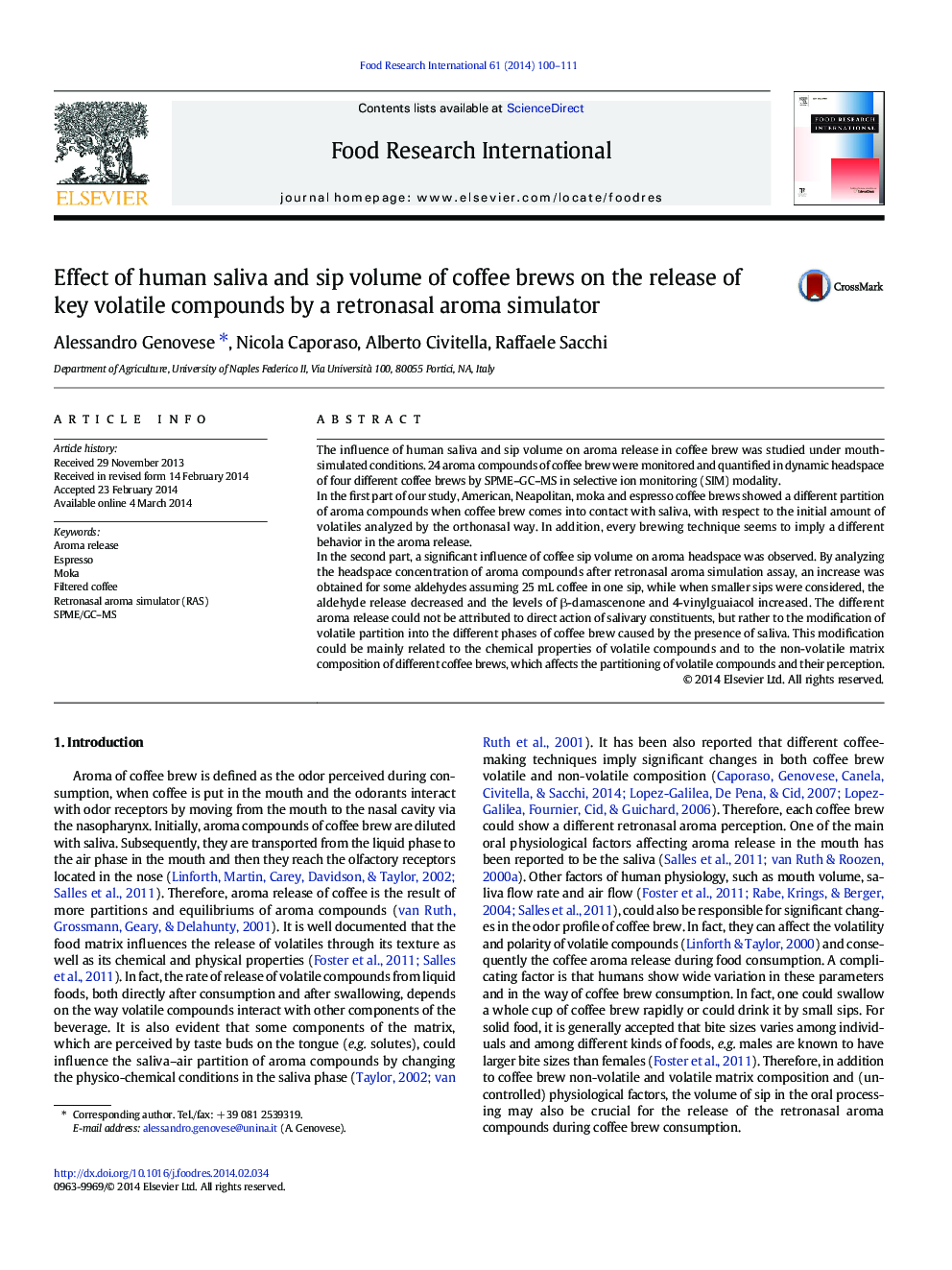| Article ID | Journal | Published Year | Pages | File Type |
|---|---|---|---|---|
| 6396385 | Food Research International | 2014 | 12 Pages |
â¢Coffee brew aroma was studied under mouth simulated conditions.â¢American, moka, espresso, and the typical Neapolitan coffee brews were studied.â¢Every coffee brew seems to imply a different behavior in the aroma release.â¢The coffee sip volume caused a different release of some key aroma compounds.
The influence of human saliva and sip volume on aroma release in coffee brew was studied under mouth-simulated conditions. 24 aroma compounds of coffee brew were monitored and quantified in dynamic headspace of four different coffee brews by SPME-GC-MS in selective ion monitoring (SIM) modality.In the first part of our study, American, Neapolitan, moka and espresso coffee brews showed a different partition of aroma compounds when coffee brew comes into contact with saliva, with respect to the initial amount of volatiles analyzed by the orthonasal way. In addition, every brewing technique seems to imply a different behavior in the aroma release.In the second part, a significant influence of coffee sip volume on aroma headspace was observed. By analyzing the headspace concentration of aroma compounds after retronasal aroma simulation assay, an increase was obtained for some aldehydes assuming 25 mL coffee in one sip, while when smaller sips were considered, the aldehyde release decreased and the levels of β-damascenone and 4-vinylguaiacol increased. The different aroma release could not be attributed to direct action of salivary constituents, but rather to the modification of volatile partition into the different phases of coffee brew caused by the presence of saliva. This modification could be mainly related to the chemical properties of volatile compounds and to the non-volatile matrix composition of different coffee brews, which affects the partitioning of volatile compounds and their perception.
Graphical abstractDownload full-size image
